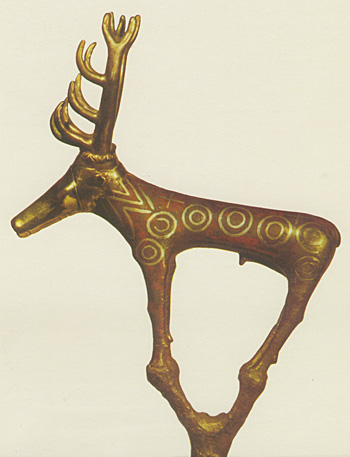
ANTONIO SAGONA & PAUL ZIMANSKY. Ancient Turkey. xii+420 pages, 168 illustrations, tables. 2009. Abingdon: Routledge; 978-0415-28916-0 hardback £80 & $130; 978-0-415-48123-6 paperback £24.99 & $44.95; 978-0-203-88046-0 ebook.

ANTONIO SAGONA & PAUL ZIMANSKY. Ancient Turkey. xii+420 pages, 168 illustrations, tables. 2009. Abingdon: Routledge; 978-0415-28916-0 hardback £80 & $130; 978-0-415-48123-6 paperback £24.99 & $44.95; 978-0-203-88046-0 ebook.
Review by Thomas Zimmermann
Faculty of Humanities and Letters, Department of Archaeology,
Bilkent University, Ankara, Turkey
(Email: zimmer@bilkent.edu.tr)

If there is one issue Ancient Near Eastern scholars can agree on, it is that Ancient Asia Minor was a splendid and dynamic arena for cultural interaction. The continuous flux of matter and ideas, oscillating between Orient and Occident, surely paved the way for the refinement and spread of numerous groundbreaking social and technological innovations. However, although Turkey is without doubt one of the most vital research foci in Old World archaeology, students of Anatolian art and archaeology have often been left struggling with that 'bewildering array of cultural complexes' referred to in the backcover notes of this book. Understandably so, as even those embarking on the exciting task of teaching Anatolian archaeology were often soon discouraged by the lack of a reliable, state-of-the-art textbook that was not focused exclusively on one specific period — e.g. the Neolithic in Turkey volumes edited by Mehmet Özdogan and Nezih Basgelen (Istanbul 1999; a revised and enlarged second edition was published in Turkish in 2007). Now there is one: a textbook that deliberately challenges this deficiency. Written by two distinguished scholars of Near Eastern archaeology, and aimed at students of Anatolian archaeology, this book attempts to provide a comprehensive and thoroughly up-to-date coverage of pre-Classical Turkey, from the Palaeolithic to the Iron Age.
Following the mandatory preface and acknowledgements, the introductory chapter (pp. 1-9) sets the environmental and climatic stage for studying (Ancient) Turkey. Here, one particular quality becomes immediately apparent: the book is written in elegant, entertaining and easily understandable English, making even a dry breakdown of geological and environmental facts a treat to read. 'Earliest arrivals' (pp. 10-36) then surveys one of the least known and researched periods in Turkey: the Palaeolithic and Epipalaeolithic/Mesolithic. This is indeed a 'fledgling field' (p. 10), whose utmost importance for understanding the north- and westbound dispersal of early humans stands in stark contrast to the actual number of well-researched sites — and the marginal number of Turkish scholars who devote themselves to Pleistocene archaeology. Also included in this chapter are the dwelling places of presumably Epipalaeolithic-earliest Pre-Pottery Neolithic A (semi) sedentary communities discovered most recently at Hallan Çemi and Körtik Tepe. Regrettably not discussed are possible discrepancies between the proposed early dating of Hallan Çemi and the (considerably later!) animal-shaped pestels of Nemrik 9 (nonetheless mentioned on p. 24). 'A New Social Order' (pp. 37-81) and 'Anatolia Transformed' (pp. 82-144) examine the Pre-Pottery and Pottery Neolithic periods in Turkey up to 4000 BC. Here, the authors succeed in contextualising the ever-growing diverse and complex data accumulated over the past decades, supported by helpful and coherent maps, charts and diagrams; they also (rightly) touch on much debated issues such as the social structure of these early sedentary communities.
The next chapter, aptly titled 'Metalsmiths and Migrants' (pp. 144-224) covers the Late Chalcolithic and Early Bronze Age up to 2000 BC. It is the most substantial, albeit still selective, study in the volume, clearly from the pen of Anthony Sagona, whose academic works continue to enhance our knowledge of Bronze Age activities in Anatolia and the Caucasian koine. Once again, well-chosen illustrations help to present the wide array of data selected to highlight the early metal ages. Although this is not explicitly stated, all the following chapters bear the hallmark of Paul Zimansky; they deal with the Middle Bronze Age ('Foreign Merchants and Native States', pp. 225-52), the Late Bronze Age/Hittite period ('Anatolia's Empire', pp. 253-90), and the Iron Ages from the disintegration of the Hittite empire to the Persian conquest in 550 BC ('Legacy of the Hittites', 'A Kingdom of Fortresses', 'New Cultures in the West'; pp. 291-370). As in the preceding sections, culture and politics in the first millennium BC are presented in a way that the reader can understand the complex shifts in technologies, society and power structures that existed in Anatolia and its neighbouring regions; it does so by including not only the oft-cited standard literature but also more recent contributions. A bibliography and index conclude the volume. Minor shortcomings such as references missing from the bibliography (Rosenberg 2007) or missing sources for illustrations (p. 193, Figure 5.22) can be corrected in the second and many further editions that this textbook will undoubtedly go through. By way of conclusion, this reviewer, himself teaching Anatolian archaeology to Turkish undergraduates, feels deeply grateful for this indispensable companion to Ancient Turkey, and concurs with the praise given by Roger Matthews: 'this is the volume [we] have been waiting for'.